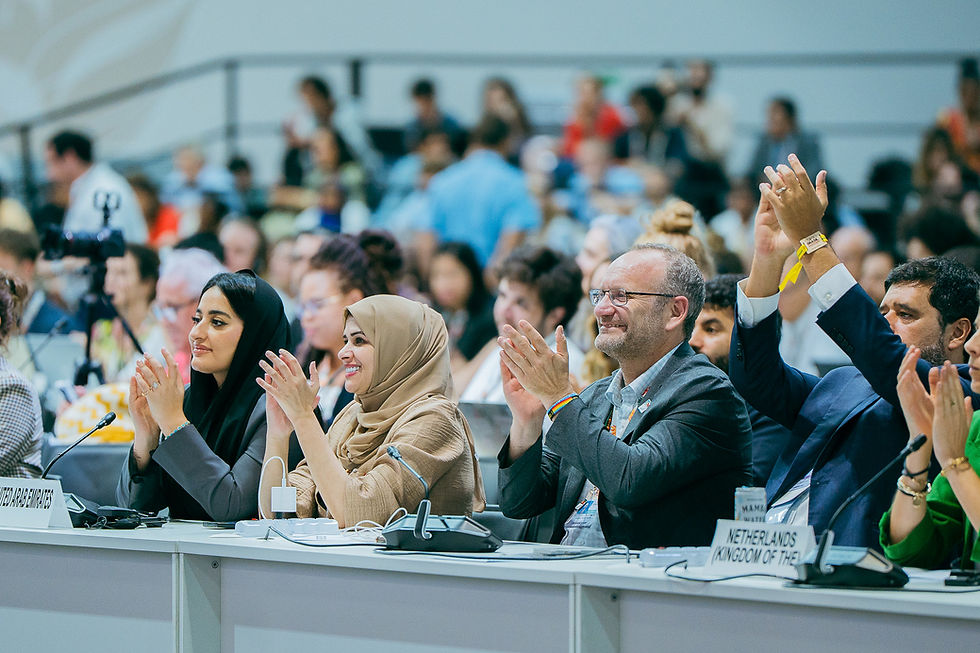Mainstreaming Gender in Agriculture and Food Systems in Southeast Asia
- Erin Sweeney, Grow Asia

- Oct 1, 2020
- 3 min read
There is significant opportunity to drive economic growth in rural economies through women’s increased participation along agriculture value chains. However, it is important to note that while women’s entry into the labor market contributes significantly to productivity gains, the outcomes of economic growth will not necessarily lead to changes in gender equity. The critical step to increasing women’s empowerment is their understanding and agency over structural (political, economic, social) power dynamics that marginalize them.
Shifting power dynamics requires a multi-sectoral approach, and engagement with national policymakers. Since its inception in 2015, Grow Asia has focused on improving livelihoods of smallholder farmer households. As Grow Asia moves into our sixth year, along with deepening partnerships with key partners in the region, we designed and launched a draft gender mainstreaming strategy to facilitate women’s empowerment along agricultural value chains in Southeast Asia, using our multi-stakeholder model.
During the 2020 Grow Asia Forum, we presented the draft Grow Asia 2020-2022 Gender Mainstreaming Strategy and shared “stories from the field” from our partners to solicit input on our Gender Mainstreaming Strategy. This article is an overview of this session during the Grow Asia Forum.

Session Highlights:
Female farmers receive only 5% of all agriculture extension services and only 15% of the world’s agriculture extension agents are women. This is a major gap to be addressed and with COVID-19 highlighting urgent work to undertake with government and other stakeholders, now is the time to advocate for women’s empowerment.
When thinking about women’s empowerment, it is important to consider both men and women farmers in the community. Men can be a great agent for change and empowerment for women and a driving force in changing their “role” (from a household role to a role in the community).
There is a need for sharing of resources and best practices around how to measure and monitor the impact of interventions focused on women’s empowerment in agriculture value chains in Southeast Asia.
“Sometimes when we organize classes/trainings mostly men show up, but then they do not share what they learn (for example: when you spray, you need to wear a special uniform). So, women, who have no chance to go to class, do not know and then spray with no uniform (which is dangerous).” – Thị Ánh Hồng Nguyễn, Vice Chairwoman, Vietnam Tea Association (Vietnam)
“We employ 40-45 year old women from rural areas with no income, no job, no education. So, by integrating them into KFP’s value chain, they improve their living condition: new income, new skills. Women farmers are now happy that they can harvest and sell mango to our factory.” – Mao Sothea, Sales and Marketing Executive, Kirirom Food Production (Cambodia)
“With our employees we are very understanding of personal issues (e.g. healthcare, childcare) and we allow the hiring of relatives. We treat them like family, they stay and they grow.” – Norberto Chingcuango, VP Corporate Planning, Feedmix Specialist Inc. II (Philippines)
“In the value chain we encourage women and housewives to get involved, and we are sure that we can contribute to women’s empowerment by engaging them in our activities in sustainable agriculture (since 85% of our stakeholders are women).” – Su Su Win, Director, Sasa International Co., Ltd. (Myanmar)
“Our evaluation and planning resource, Benchmarks for Transformational Partnerships and Women’s Economic Empowerment (WEE) in Agricultural Value Chains (AVCs) is designed to provide SMEs with a scorecard to evaluate their value chain impact on Women’s Economic Empowerment.” – Marie Lisa M. Dacanay, PhD, President, Institute for Social Entrepreneurship in Asia (Philippines)
By the end of the session, participants gained:
An understanding about gender-related resources and opportunities the Grow Asia network offers to our partners;
Insights on gender mainstreaming actions partners take in different stages of the value chain;
Ideas about what Grow Asia’s partner can gain from Grow Asia’s efforts in gender mainstreaming, and how they can participate and contribute their own knowledge, expertise and resources.
Next Steps:
Grow Asia will review proposed ideas from participants including conducting a gender mainstreaming needs assessment of Grow Asia partners, defining gender-related KPIs to measure impacts on women of programs across the Country Partnerships, and integrating gender into companies’ due diligence so that women consult with other women. Grow Asia will also explore ways to facilitate sharing of best practices, tools and resources, and engage with partners to improve women smallholder farmer livelihoods along agri value chain projects.
We invite any Grow Asia partners who are interested or currently working on women’s economic empowerment and/or gender mainstreaming to engage directly with us in our upcoming activities. For more information and collaboration opportunities, visit us online or reach out to erin@growasia.org.
This article was originally published in the 2020 Grow Asia Forum Outcome Report. To read the full report, click here.



